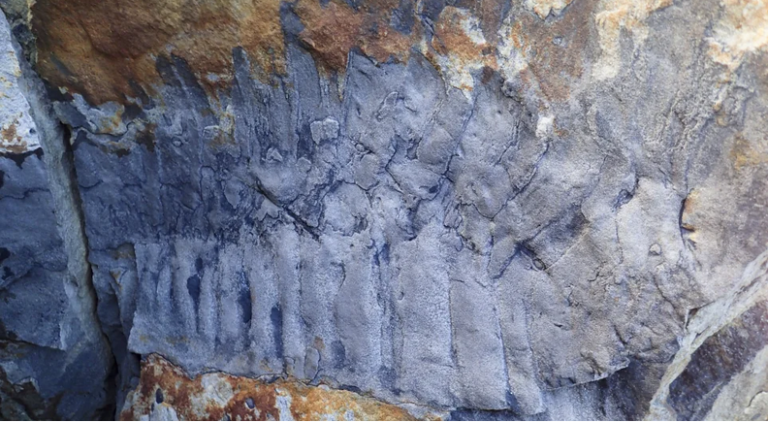The largest fossil of a giant centipede that has ever been found on Earth and which was as big as a car, was discovered off the coast of northern England. The fossil – scientifically named Arthropleura – dates back to about 326 million years ago, at least 100 million years before the time of the dinosaurs.
It is the largest known invertebrate of all time, larger than the sea scorpions that have held this record in the animal kingdom so far.
The fossil was found on a beach in Northumberland, about 55 miles north of Newcastle. It is the third of its kind ever found, but the oldest and largest (the other two were found in Germany about a century ago).
The rescued fossil, which comes from the back of the animal, is about 75 cm long and 36 cm wide, but the animal is estimated to have reached 2.7 meters in length and 55 in width, while weighing about 50 kg. The number of his legs is estimated to have been at least 32, maybe 64.
Researchers led by Dr. Neil Davis of the Department of Geosciences at the University of Cambridge, who published the journal in the Journal of the Geological Society, accidentally discovered the fossil on a large sandstone rock that had fallen off a cliff above Hogwick Beach. The fall created a large crack in the rock and thus exposed the fossil. In contrast to its current cold and humid climate, northern England had an almost tropical climate at the time of the fossil, as present-day Britain was then close to Ecuador.
Turkey accused of blocking Kurdish film at Iraqi film festival
Invertebrates and amphibians lived from the scattered vegetation of the area. The part of the rescued fossil belonged to the exoskeleton of Arthopleura, while its head has not been rescued. Its large size can not be well explained at present.
These animals existed on Earth for about 45 million years, before disappearing during the Permian period for unknown reasons (probably due to climatic-environmental pressures or due to the emergence of reptiles that gradually dominated).
The fossil will be on display from the New Year at the Sedgwick Museum in Cambridge.
Ask me anything
Explore related questions





